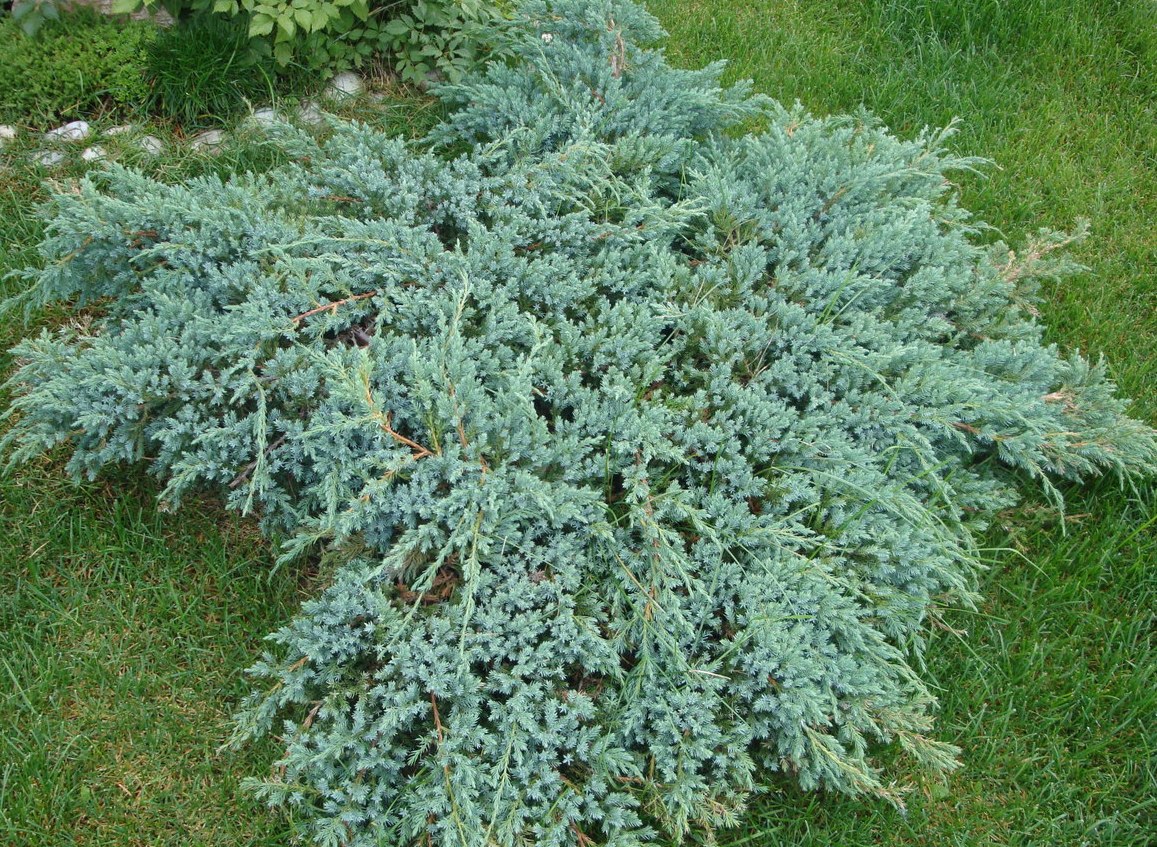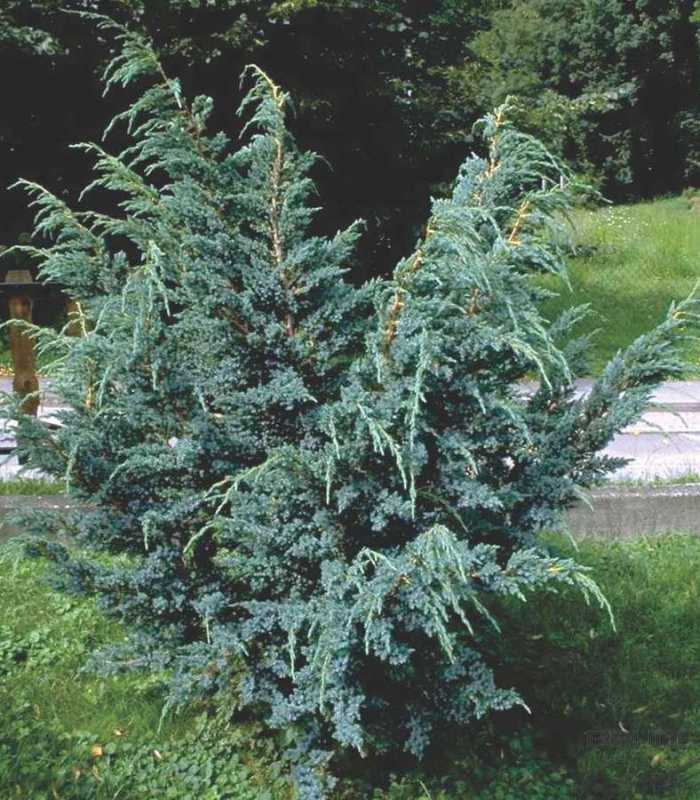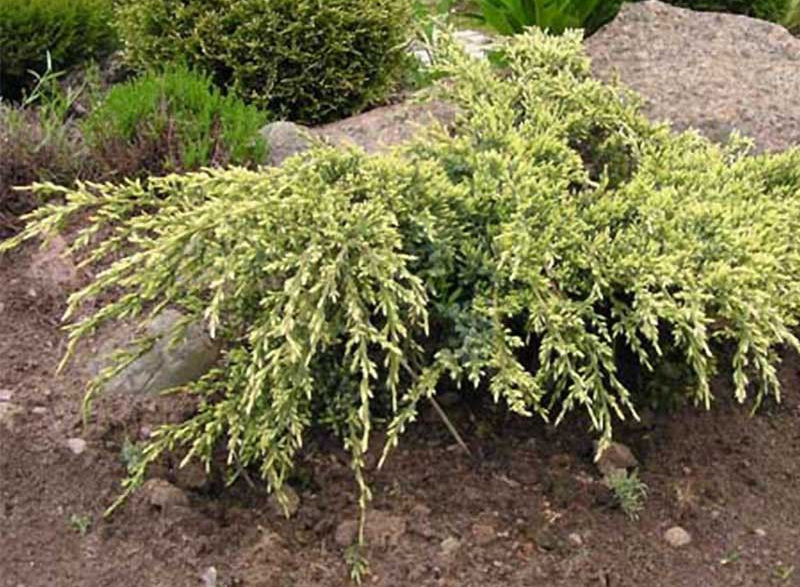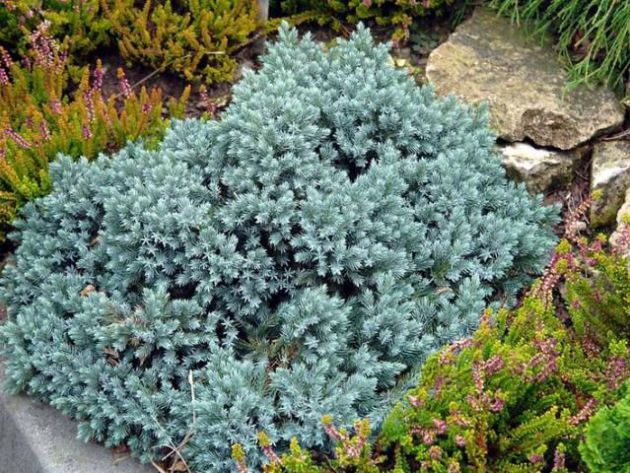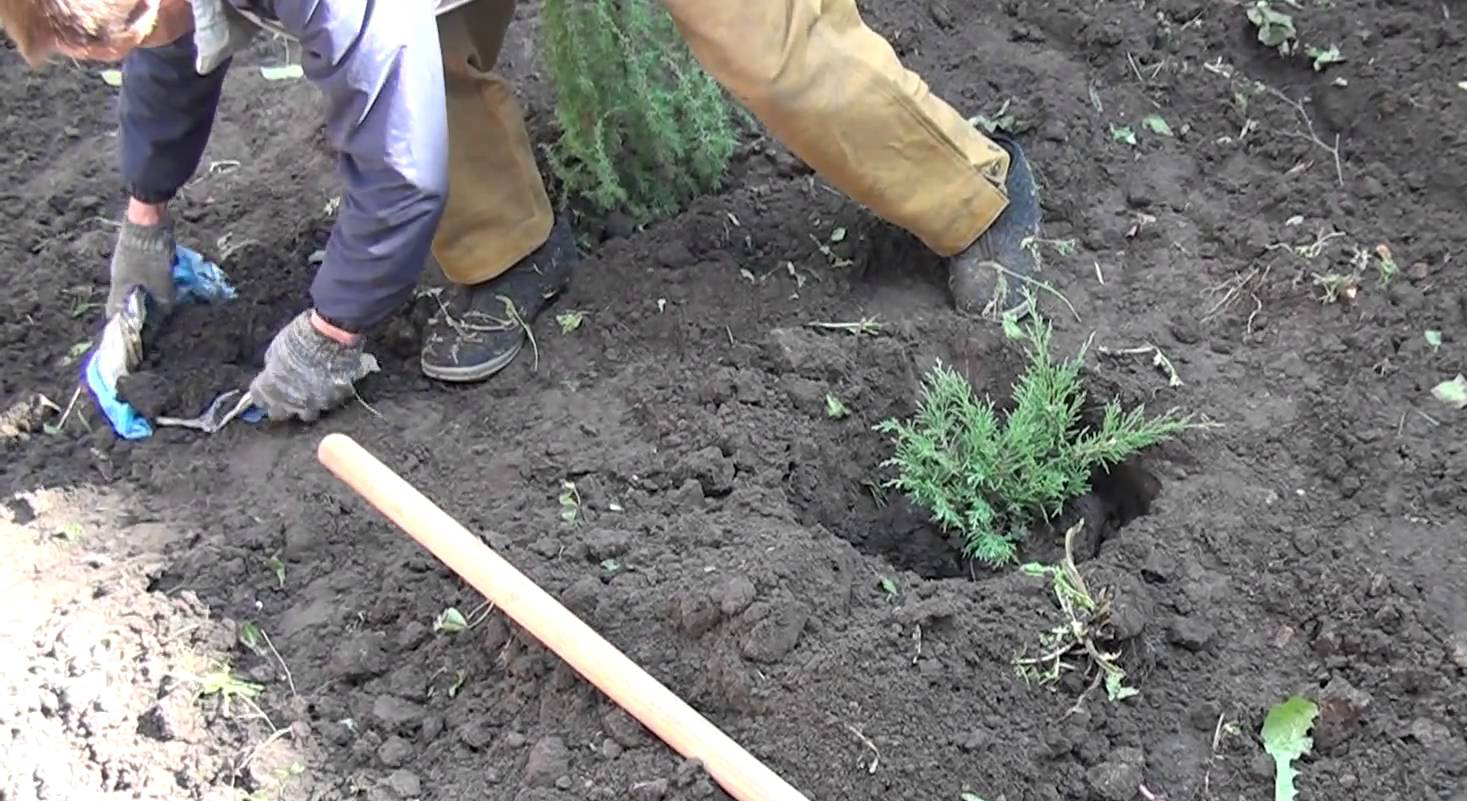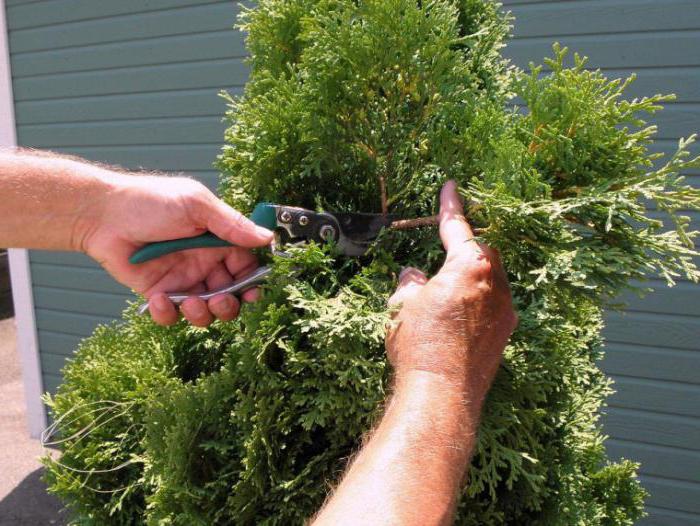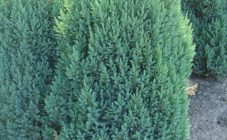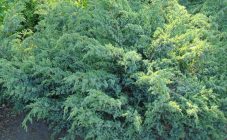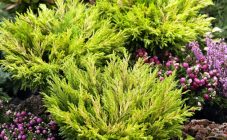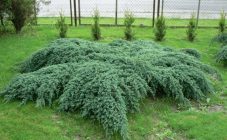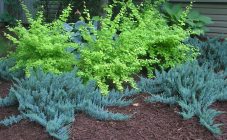Evergreen scaly juniper is one of the favorite plants of landscape designers. Most varieties of compact shrubs are undersized, unpretentious, easily tolerate formation and are widely used to create topiary.
Characteristics of culture
Junipers belong to the Cypress family, wild plants of the mountainous regions of Southeast Asia. In gardening, shrubs have been used since the beginning of the 19th century. They live in favorable conditions for centuries. Nowadays, varieties with a low, creeping crown, emitting a weak coniferous aroma, have become widespread. These monoecious shrubs are characterized by dense branches with tough, short needles. The length of the crescent needles is 5-8 mm, they are collected 3 in whorls, slightly pressed against the branches. Above, the shade of the needles is light, silvery, below it is dark green.
Juniper bushes grow at a slow rate, up to several centimeters per season. On mature shrubs, oval cones-berries with 1 seed are created on the branches, which ripen by the end of May a year later. First they are green-red, then blue, 6-7 mm long. Not all varieties tolerate severe frosts. In the climate of central Russia, many junipers require shelter for the winter.
Description of varieties
More than ten varieties of scaly juniper are known in Russian gardens. The differences are in the shape and color of the crown. Popular include Holger juniper and blue creeping bushes.
Meyeri is one of the tall varieties of Chinese selection, bred more than a hundred years ago. The plant stretches up to 5 m, the shoots increase by 10 cm per year.But there is a modern version - a compact of the picturesque Mary juniper, undersized, 60-70 cm.Meyeri Compact is distinguished by a bluish color of needles, undemanding to soils, winter hardiness - up to 23 ° C. Shoots branch off obliquely, the edges fall beautifully.
The cone-shaped graceful shape of the crown is distinguished by the Loderi juniper variety, known since 1926. The shrub 1.5 m high was named after its creator, an English aristocrat. The branches of the plant rise densely, occupying 80-100 cm in a circle. They develop rather slowly - by the age of 10, the juniper grows to 80 cm. The needles are green-gray, short. The variety is drought-resistant, warm, and photophilous.
As if wrapped in golden radiance, Holger scaly juniper stands in May and June. Its crown rises up to a meter, in a circle - 1.5-2.5 m. This is the largest shrub of its kind, created in Sweden in 1946. Due to its seasonal scenic character, Holger juniper is widely used in garden design. In the mass, the needles are of a rich bluish-green color, but a light golden hue is inherent in young branches, which darkens only by autumn. According to the description, Holger junipers grow by 7-10 cm in height and up to 25 in width over the summer. A sprawling bush with obliquely rising shaggy branches decorates the courtyard, purifies the air with phytoncides, which it emits more than any other coniferous culture 6 times.
Slightly similar in decorative properties to the previous variety are Holger juniper bushes, another plant of the same meter height. Only by the strength of growth, the Golden Flame juniper lags behind its counterpart, expanding to the sides by 18-20 cm during the season. By the age of 10, the shrub grows up to 1 m.The decorativeness of the crown of the variety persists for a whole year due to individual creamy-golden islands against the general bluish background of needles. The charm of the variety is fully revealed when the juniper is planted in a sunny area.
Dream Joy juniper bushes are conquered by their elegance and peculiar fun, according to the descriptions of gardeners. From the beginning of summer, they are similar in color to the previous 2 varieties. Shades of young shoots against the general green-bluish background of the bush in this plant are more muted, rather light green and slightly yellowish, but not strict, like in many conifers. The variety, bred in England, is undersized, in 10 years it stretches up only 50-60 cm, the crown expands to 1-1.2 m. The growth of branches is 7-15 cm in height and 16-24 cm in circumference. The shape of the bush is cushion-shaped, symmetrical, compact. To characterize this juniper, its winter hardiness is mentioned, up to -26, -28 ° C.
A separate series are silver-blue scaly junipers of the selection of Holland and Sweden: Blue Carpet, Blue Star, Blue Swede and others. Their common feature is the deep bluish-silver color of the needles. In most shrubs, branches are creeping, smoothly bent down. They grow in the sun and in partial shade, do not like low-lying areas. The average height is 60-100 cm, the diameter of the dense crown is 1.5-2.5 m. The winter-hardy Blue Svid variety is short, 1 cm, the needles become almost gray in autumn. These varieties look spectacular on the trunk.
The Floreant juniper variety was created from the Blue Star shrub in Holland and named after a popular football club. It grows slowly - 6 cm per season, 40 cm high, the width of the hemispherical crown is 50 cm. It impresses with patches of white-cream needles on a blue background.
The Hannethorpe juniper shrubs are considered a species of Blue Swede. At the open crown, the tips of the shoots fall down. Growth is moderate, reaches 1.5 m in height in 2 decades, diameter - 2.5 m. A beautiful, austere variety with a bluish color can withstand temperatures up to 26, 28 degrees.
Landing
Scaly junipers are propagated by seeds and cuttings, treated with a growth stimulant. The berries are harvested in autumn, soaked for 7 days. The seeds are scarified with hard sandpaper and sown in a box, which is covered under the snow. Planting sprouts in the ground is carried out in the spring.
It is easier to purchase a seedling with a closed root system:
- A hole is dug in a sunny area or in partial shade twice the size of the container.
- On clay soils, drainage is arranged with a layer of 20 cm.
- Garden soil and peat are mixed 1: 1.
- A special mineral complex is added: 5 g per 1 liter of substrate.
- The lump is set so that the root collar is flush with the ground.
- The hole is watered and mulched.
Care
Junipers require moderate watering. Sprinkling is carried out in the evening or early in the morning. Lay a layer of mulch 3-4 cm to retain moisture.
For proper care, the bushes are fed with organic matter or minerals:
- in the spring, nitrogen preparations are introduced;
- in July - phosphorus;
- in the fall - potash;
- foliar feeding is effective.
Sanitary pruning is carried out regularly, and a plastic crown is formed at will. For the winter in a harsh climate, the bushes are covered.
Diseases and pests
Junipers suffer from fungal diseases, which are prevented by treatment with fungicides Quadris, Horus, Maxim, Switch and others. Shrubs are harmed by scale insects, aphids, moths, mites. Prophylactically sprayed with insecticides Match, Actellik, Engio.
Landscape
Bushes with an original crown and a shade of needles, like the Dream Joy juniper, act as expressive soloists, and are spectacular in a group. Creeping varieties are planted in the foreground of the compositions.Holger scuamata juniper bushes often grow in such places. Dense hedges are created from the tall ones. Plants with different shades of needles look interesting next to them.
Scaly junipers will decorate the garden, adding a unique sophisticated flavor. Caring for the bushes is not difficult at all. Watering and fertilizing will provide the plantings with a healthy look.
